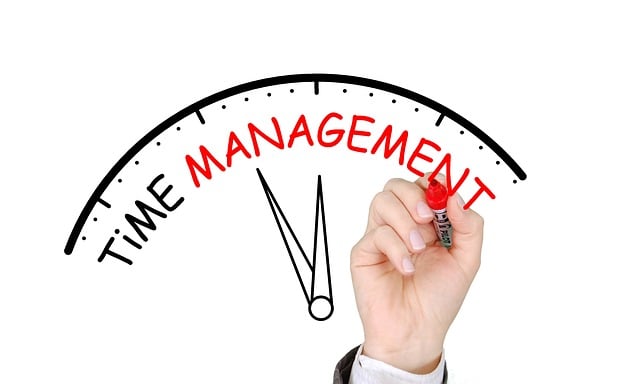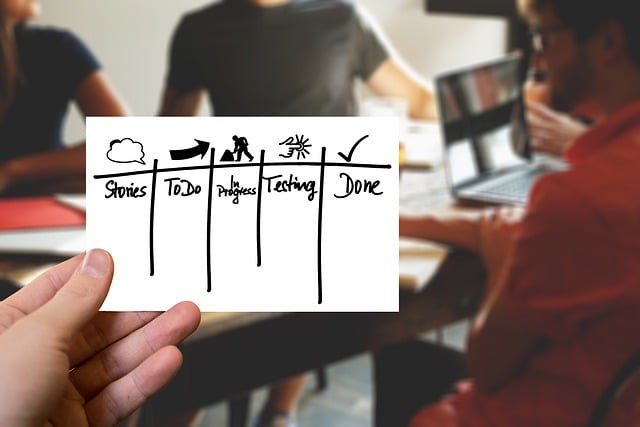The Lean Workplace Philosophy, pioneered by Toyota, focuses on eliminating waste and maximizing efficiency via lean manufacturing principles. Key tools include 5S training (sorting, setting in order, cleaning, standardizing, sustaining) for workplace organization, and Kaizen events and A3 problem-solving for continuous improvement. Process standardization ensures smooth workflows with minimal variations, preventing errors and delays. Together, these methods enhance productivity, foster a culture of continuous improvement, and create safer, more pleasant working environments.
“Discover the transformative power of Lean workplace philosophy – a proven system for maximizing efficiency and productivity. In this comprehensive guide, we explore essential components like 5S training, which lays the foundation for streamlined operations. Learn how implementing effective workplace organization techniques can drive significant improvements.
From continuous improvement strategies to the critical role of process standardization, gain insights into creating a lean and productive environment. Embrace these principles to optimize workflows and elevate your organizational performance.”
- Understanding Lean Workplace Philosophy: A Brief Overview
- The Role of 5S Training in Lean Management
- Implementing Workplace Organization Techniques for Efficiency
- Continuous Improvement Through 5S: A Sustained Approach
- Process Standardization: Key to a Lean and Productive Environment
Understanding Lean Workplace Philosophy: A Brief Overview

The Lean Workplace Philosophy is a management approach that focuses on eliminating waste and maximizing efficiency in the workplace. It’s rooted in the principles of lean manufacturing, initially developed by Toyota, and has since been adapted for various industries. At its core, this philosophy emphasizes creating an environment where every step in a process adds value to the end product or service.
This involves implementing practices like 5S training—a system that promotes workplace organization through sorting, setting in order, shining (cleaning), standardizing, and sustaining these improvements. Lean management also encourages continuous improvement through methods such as Kaizen events and A3 problem-solving, ensuring processes are consistently reviewed and optimized. Process standardization is key, aiming to create smooth workflows with minimal variations to prevent errors and delays.
The Role of 5S Training in Lean Management

The 5S training method is a cornerstone in the Lean management philosophy, focusing on workplace organization and continuous improvement. This powerful tool involves teaching employees five basic principles: Sort, Set in Order, Shine (cleanliness), Standardize, and Sustain. By implementing 5S, organizations can transform their workspaces into efficient, streamlined processes, eliminating waste and enhancing productivity.
Through training, teams learn to sort through unnecessary items, set up organized workstations, maintain a clean and tidy environment, establish standardized procedures, and continuously improve these practices. This systematic approach ensures that every aspect of the workplace is optimized, from material storage to task execution. By fostering a culture of process standardization, 5S empowers employees to take ownership of their work areas, driving sustainable productivity gains and creating an overall safer, more pleasant working environment.
Implementing Workplace Organization Techniques for Efficiency

Implementing effective workplace organization techniques is a cornerstone of lean management philosophy. One proven approach is adopting 5S training principles—Sort, Set in Order, Shine (Clean), Standardize, and Sustain. This methodically structured process not only enhances overall workplace organization but also drives continuous improvement through ongoing 5S continuous improvement initiatives. By systematically organizing work areas, tools, and materials, employees can streamline their processes, reducing waste and increasing productivity.
Process standardization is another key element that contributes to a leaner workplace. Standardized procedures ensure tasks are completed efficiently and consistently, minimizing errors and maximizing output. This involves documenting and communicating optimal workflows, ensuring everyone follows the same steps for each task. When combined with 5S training, process standardization creates an environment where inefficiencies are readily identified and eliminated, fostering a culture of continuous improvement that benefits both employees and the organization as a whole.
Continuous Improvement Through 5S: A Sustained Approach

In the realm of lean management, Continuous Improvement is a cornerstone principle, and the 5S method serves as a powerful tool for achieving this in workplace organization. This proven approach, rooted in Japanese production systems, involves sorting, setting in order, shining (cleaning), standardizing, and sustaining. By implementing 5S training, organizations can transform their spaces into highly efficient, streamlined environments. Each ‘S’ represents a step towards process standardization, ensuring every element within the workplace serves a purpose and contributes to overall productivity.
The sustained approach of 5S fosters a culture of continuous improvement where employees actively participate in identifying inefficiencies and implementing solutions. Regular 5S audits and refinements maintain an organized, clutter-free workspace, minimizing downtime and enhancing workflow. This method not only improves productivity but also creates an environment conducive to innovation and employee engagement, making it an indispensable practice for any lean management strategy.
Process Standardization: Key to a Lean and Productive Environment

Process Standardization is a cornerstone in creating a lean and highly productive workplace, underpinned by lean management principles. This involves implementing structured processes that eliminate waste and streamline operations. The 5S training methodology—Sort, Set in Order, Shine (Clean), Standardize, Sustain—is a popular tool for achieving this. By teaching employees to maintain an organized workspace and follow consistent procedures, companies can ensure tasks are completed efficiently and safely.
Workplace organization through process standardization fosters a culture of continuous improvement. It empowers employees to identify inefficiencies and make data-driven suggestions for enhancement. This collaborative approach not only drives productivity but also engages the workforce, creating a dynamic environment that adapts to changing market demands.
The lean workplace philosophy, with its focus on eliminating waste and maximizing efficiency, is a powerful approach to transforming organizations. By integrating 5S training, implementing robust workplace organization techniques, and embracing continuous improvement through standardized processes, businesses can achieve exceptional productivity. This strategic methodology not only enhances operational excellence but also fosters a culture of constant learning and adaptation, ensuring a competitive edge in today’s dynamic market. Through process standardization, companies can streamline their operations, reduce errors, and create an environment that promotes innovation and employee engagement.
